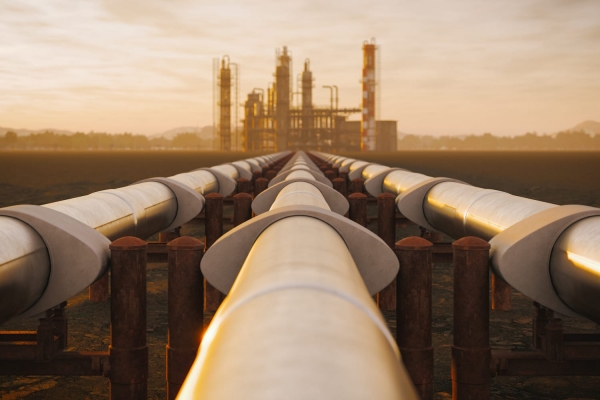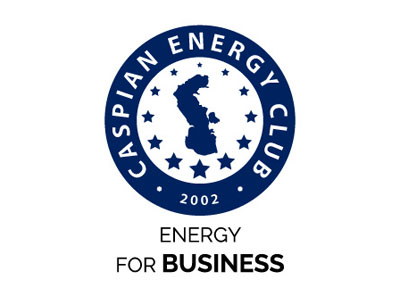Natural gas
Referring to Eurostat, Greek OT.gr shared good news for fossil fuel producers on January 30. The share of fossil fuels in EU's gross fuel and energy balance remained unchanged at 70% in 2021 compared to 2020. The publication emphasizes that even though the figure has gradually decreased by 13 percentage points since 1990 due to the development of renewable energy sources, it still remains unchanged.
At such high rates of hydrocarbon use, Norway became the largest supplier of natural gas to Germany in 2022. The total volume of gas import to Germany decreased by 12.3% compared to 2021, Оірrісе cites the data from the German federal network agency Wundesnetzagentur.
According to the German regulatory body, Norway supplied 33% of gas imported by Germany last year, followed by Russia whose share fell to 22% compared with 52% in 2021.
As follows from the data processed by Eurostat, Greece is ranked 4th among 13 member states, which is significantly higher than the average for Europe.
Notably, in Greece, the share of fossil fuels in gross energy totaled 82.18% in 2021 against 81.37% in 2020.
Malta (96%) was the EU member state with the highest share of fossil fuels in gross available energy, followed by Cyprus and the Netherlands (89%), Ireland and Poland (88%).
Most of the other member states had shares between 50% and 85%.
Only three countries, namely Sweden (32%), Finland (38%) and France (48%), had shares below 50%.
Compared to 2020, in 2021, the largest but insignificant decrease in the share of fossil fuels in gross available energy was measured in Finland (-15 hr), Belgium (-15 hr), Lithuania (-3 hr), Portugal (-3 hr) and Denmark (-2 hr).
The highest increase was registered in Bulgaria (+4 hr), Estonia (+3 hr), Poland and Slovakia (both +2 hr), and Spain (+1 hr).
Over the past decade, all the EU member states have registered a decrease in their share of fossil fuels in gross available energy. The largest decrease was measured in Denmark (from 81% to 57%), followed by Estonia (from 91% in 2010 to 69% in 2021) and Finland (from 57% to 38%).
Other considerable decreases were registered in Latvia (from 69% to 57%), Luxemburg (from 90% to 79%) and Lithuania (from 75% to 64%).
On the other hand, the lowest decrease was fixed in Germany (from 81% to 79%) followed by Romania (from 75% to 72%), Malta (from 100% to 96%), Hungary (from 73% to 69%) and France (from 52% to 48%).
The shortage of gas from Russia was compensated through imports from the Netherlands, Belgium and Norway, according to the federal network agency of Germany.
In the years to come, TAP AG Pipeline Company will initiate the first level of the Trans Adriatic Pipeline (TAP) capacity expansion by 1.2 bcm/y, the company says. That very volume was requested by suppliers.
As reported, in July 2021 TAP AG started a non-binding market test to expand the Trans Adriatic Pipeline capacities from current 10 billion cubic meters of gas per year. From January 16 to 22, 2023, the company held the first phase of binding market test which enabled shippers to request additional long-term capacities.
“Following the closing of the binding bid submission window on January 22, 2023, TAP AG will trigger the first level of TAP’s capacity expansion and allocate 1.2 billion cubic meters of incremental capacity per year through long term contracts starting from 2026”, says the information.
The company clarifies that TAP’s capacity can incrementally be increased up to at least 20 bcm per year by 2027.
Due to the sharp increase in gas prices, in 2022 Europe’s largest economy had to save gas by limiting households’ consumption and reducing industrial output.
According to Вundеѕnеtzаgеntur, gas consumption in Germany fell by 14% in 2022 compared to the average consumption rate fixed over the past 4 years.
Industrial demand declined by 15% compared to the average indicator registered over the past 4 years. During October-December, gas consumption in industry reduced by 23%, while consumption by private users and enterprises fell by 21%.
Supplies from Russia reduced and gradually ceased early in September. So, Germany started looking for LNG import opportunities and began building regasification terminals to be able to accept shipments.
Electricity
Though electricity export, as a whole, grew almost by 9% within EU, the need for structural changes in the market and additional supplies is starting to be felt due to the climate change. Last year, electricity export from Germany to France rose to the highest level in more than three decades. The reason - France had to face long interruptions in the operation of nuclear power plants.
According to the government data, net export to the networks of Germany’s western neighbor has more than doubled, reaching 15.3 TW-hrs. That has been the maximum indicator since the beginning of registration in 1990, Вlооmbеrg reports.
France is desperate for all electricity it can get. Meanwhile, Germany increased production at its coal-fired and gas-fired power plants, as imports of Russian gas decreased. According to the European network group, electricity production in France will reduce by 15% in 2022 – down to 439 TW-hrs.
Against this background, on January 30 the Norwegian government announced plans to protect security of supply and declared that it can restrict electricity exports to neighbor countries if the risk of domestic deficiency arises. Hydropower accounts for 90% of Norway’s electricity output. According to the data of Оіlрrісе, the remaining 10% or so falls to the share of wind energy in Norway. The government declared that the plan for monitoring the water level and impact on electricity generation must be adopted until winter of 2023/2024.
“There should always be enough power in our sockets (at home) and we should have enough power for our industry,” Prime Minister Jonas Gahr Stoere said.
The government will limit power exports if the risk of its deficiency arises in the country. “We will export to none of our neighbors if we reach a critically low level”, Prime Minister of Norway says.
The reason - last summer’s dry weather across Europe affected electricity generation in Norway. While Europe struggled to provide natural gas for electricity generation and heating in winter, Norway, the largest oil-gas producer in Western Europe, faced quite a different problem in summer - dry weather.
When reservoirs for hydro electric power plants reached a critical level, the Norwegian authorities requested operators not to export very much electricity to the rest of Europe and handle without imports from Europe facing power supply challenges.
Nor can Europe rely on wind. The European wind power industry is also ringing the alarm due to new challenges in 2023 as high material costs and lengthy project approval procedures slow profitability despite growing demand for renewables.
The latest warnings came from the Danish wind turbine maker Vestas which told investors in January that the year would be weaker as EU’s slow planning system and supply chain inflation cut company’s profits.
According to the Financial Times, the consequences of Russia’s war with Ukraine drove up prices on energy carriers and key raw materials like steel, creating a perfect storm for Europe’s wind energy sector.
Despite the energy crisis-driven demand growing among governments and consumers for renewable energy sources, slow approval processes in EU and the UK have led to the lag and delays in orders for new turbines.
In its forecast for 2023, Vestas expects inflation to continue to drive up prices across the supply chain, and warned that the “reduction” in wind turbines will affect this year’s sales and profitability figures.
New electricity supplies can mitigate risks, and already proven suppliers such as Azerbaijan can come to the rescue here. As President of Azerbaijan Ilham Aliyev has recently pointed out in his speech, the country’s potential makes 27 GW of onshore wind and solar energy, 10 GW of wind and solar energy in the territories liberated during the Patriotic War of 2020, and 157 GW of wind energy in the Azeri sector of the Caspian Sea. It makes a potential of almost 200 GW.
For comparison: in 2022, renewable capacity across the world will reach a record level - 320 GW, says International Energy Agency’s survey Renewable Energy Market published on May 11. It is 8.5% higher than the figure of the last year when renewable capacity additions reached 295 GW.
We certainly need sufficient amount of export routes and of course implement all these projects stage by stage, I.Aliyev stated. Important MOUs and agreements signed between Azerbaijan and international energy companies will allow to generate up to 22 GW of wind and solar energy. On December 17, Azerbaijan, Georgia, Hungary and Romania signed an agreement on laying the Black Sea marine electric cable from the Black Sea coast of Georgia towards the coast of Romania. This agreement was attested by the European Commission President. Thus, the cable, enabling at an early stage to transport 4GW of green energy from Azerbaijan, will be laid.





